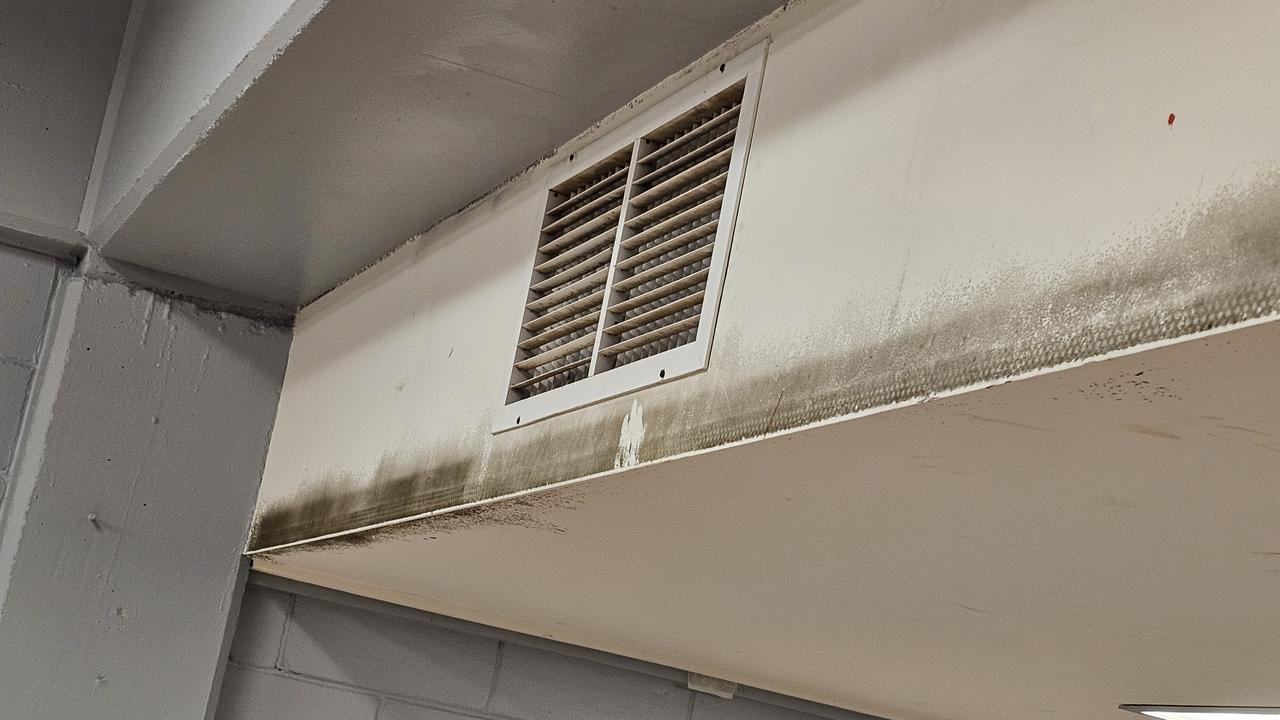
Images have been released of an extensive mould outbreak in an outback school that has infested carpets, chairs, plasterboard and even drum kits as concern grows about how long it will take to demolish and rebuild.
Willyama High School at Broken Hill in NSW has been closed to students and staff since mid-January when an extensive mould outbreak was discovered by a staff member after returning from the summer break.
An independent hygienist's report, handed to government in recent days, found remediation would require the three-storey classroom building to be gutted of all porous materials, including insulation and electronics.

Even then, another infestation could develop without addressing other issues in the near-windowless 50-year-old facility nicknamed by some as "the jail".
Instead, it will be demolished and rebuilt.
"While today's news is not ideal, I want to assure the people of Broken Hill that we will be with you for as long as it takes to rebuild this school," Education Minister Prue Car said on Tuesday.
Staff and the public school's 570 students have been learning across three other school sites in the outback town since the start of term one, albeit with many electives cancelled because of a lack of appropriate facilities.
They will be reunited on day one of term two in a "pop-up school" of high-quality demountables being established on the grounds of Broken Hill High School.
The rebuilding of the school would bring a lot of relief to parents, staff and students, local mayor and former Willyama student Tom Kennedy said.

But concern remained over how long Willyama students would be left learning in demountable classrooms.
"At least in the short term, two or three years, it will be difficult education outcomes and make it very difficult to retain education staff," Cr Kennedy told AAP on Tuesday.
Kate Phillips, whose children in years 9 and 11 were learning across two campuses, said students were disengaged without their chosen electives, enduring a "horrific" level of anxiety and copping the smell of full portaloos wafting into classrooms.
She hoped older students would be subject to special consideration provisions for their tertiary education admission scores, or ATARs.
"We're grateful they're not all being homeschooled but also in some aspects, they might actually be better off at home," Ms Phillips told AAP.
"Then they're not depressed or struggling with not being with their mates."
Opposition education spokeswoman Sarah Mitchell told AAP she had met parents and staff who wanted to shift the pop-up school to its own parcel of land.

She called on the government to consider the proposal and give students, parents and staff more clarity on how they would be supported as the school is rebuilt.
The education department said it hoped the new Willyama school would be ready in 2026.
"A key job for us now is to identify which personal belongings from the school can be returned to their owners and what will need to be replaced," local department official Peter Macbeth said.
According to the report, two dangerous human pathogens - aspergillus and penicillium spp - were among the mould types found in several locations tested.
The exact cause of the outbreak could not be determined.
But the hygienist found it was likely caused by a combination of factors including moisture from the school's evaporative cooling system left running over the summer, end-of-year carpet cleaning and water ingress after an unseasonably wet summer.

Those moisture sources combined with no open windows and poor insulation "may have provided an ideal environment to support the mould infestation", the report said.
Overcrowding and inadequate storage facilities prevented routine cleaning and allowed organic debris to accumulate.
The cooling system also spread the outbreak on the ground level throughout the building.
Images in the report showed mould around air conditioning ducts, on concrete, in cabinets, table tops and in long smears across carpets.
Fungal growth was also observed on drum kit skins, fabric desk chairs, paintings and mouse pads.







